An Informal SMD Get-Together by Zoom
Summary prepared by Clerk, Harvey Heyser – 2-27-21
Normally, the SMD would not publish “minutes” for a gathering when no business was discussed, but given the fact that the get-together was the first remote informal event the Division has held, the following is a brief summary of some of what was shared during that event (for SMD members information and to encourage future participation). 15 or so attended.
Superintendent Jerry Skeim served as moderator. [He had his hands full.] Alex Polimeni acted as Zoom Master.
John Madden described his adventures with an 0-6-0 that he just could not get to run. It turns out that he had removed the DCC chip for some reason. (He could not remember why.) Once he reinstalled the chip, the loco ran beautifully.
Bob Geldmacher told everyone about using 3-D printers at the Westminster Library (available for free) to aid in constructing parts for an On30 mine he’s working on.
Bob also described his efforts to bend tubing in order to make light fixtures (using a jig he made) and his hunt for LEDs with wires small enough to fit into the tiny brass tubing. Bob Johnson suggested another approach – filling the tubing with sand before bending – and using the tubing itself as one of the wires.
Dave Thalman showed a live video from his phone of his continuing progress turning one of his helixes into a scenicked mountain. Dave has had much success using “ground goop” in his scenery efforts. Once mixed, it remains usable for a long time.
Bob Johnson notified everyone that his basement renovations are complete enough for him to [deviously] begin plotting ways to make his operating schedule more challenging. He also has been reworking some brass articulateds with new NWSL high-low gearboxes to improve running qualities and to quiet them down.
Rich Randall displayed photos of the Central Locomotive Works SD-40 kit (now almost 50 years old) he has been working on. One of the things he wants to change is the drive train, which seems (from the photos) incredibly kinked with the trucks turned even slightly.
Ron Polimeni asked what people are doing for paints now that Floquil is no longer available.
- He indicated his dislike for the semi-gloss finish of Modelers Decals and Paint’s products.
- Bob Johnson said he continues to use his inventory of Floquil.
- Others pointed out that they have had success with Scalecoat by using only Scalecoat thinner (the kind specific for each of the 2 kinds of paint Scalecoat makes).
- Ron reported he has had no luck with Tru-Color, which goes on glossy. Tru-Color thinner contains a substantial percentage of MEK and, therefore, should be used with plenty of ventilation and other extra precautions for using hazardous materials.
- Bob Morningstar pointed out the need for constant airbrush tip cleaning (with a q-tip) during spray sessions with water-based paints, which (in his experience) do not adhere as well as Floquil but have otherwise performed well.
- Tru-Color paints go on glossy.
Ron then displayed some of the diesels he has been painting. He showed how a chrome marker works for the stainless steel grilles. (The marker is made by Molotov and is available from Blick Art Supplies.)
Pete and Jane Clarke showed slides from this year’s EBT Winter Spectacular. [Pete looked quite forlorn in a shot down from the caboose cupola.]
Jane showed the 3-D printed model of the freight house she’s been working on for Robertsdale as well as shots of the component parts, which were quite complex in form (and quite expensive).
Pete showed the trestle he has installed at Pucky’s Coal in Orbisonia immediately adjacent to the (always crowded) operator’s aisle. Those in attendance immediately started taking bets on how long it would be before an elbow (or gut) would knock the hoppers onto the floor. [Most guesses were under a minute.] On a more constructive note, Pete showed his first efforts making a dirt road (to Pucky’s).
Frank Benenatti talked about the model of Ewing’s Mill he constructed for Mt. Union on Pete and Jane’s layout. He used a balsa wood mock-up that he cut and reworked at the layout to get the model sized to fit the actual location (an amazing process according to Jane). The final model was then constructed of more conventional materials and included a very nice embossed paper “stone” foundation as well as custom ink-jet printed decals based on the prototype.
Bob Morningstar displayed several equipment projects:
- A Walthers (agricultural) combine model “mounted” on a flatcar with attendant parts not yet installed and with all required blocking, tie-downs, etc. (as the prototype would be shipped): the load was held in place by micro-magnets.
- An old Akane brass USRA light Mikado re-motored and reworked to represent a B&O prototype: Bob reported that the change that most significantly improved running was adding a torque arm to the drive.
Bob also reported he has found a very fine-tipped marker for adding “chalk” marks to freight cars. Bob Johnson indicated he has used Prismacolor pencils for the same task.
Frank Benenatti has been trying to sell his layout. He thought he had a buyer who unfortunately had to back out when the renovation of the proposed location (basement) turned out to be too costly. Frank is still willing to sell his structures if anyone is interested. Frank is thinking of building a display of Robertsdale for the FEBT museum – something different.
Frank also reported feeling lonely running trains by himself during the pandemic. Consequently, he turned up the volume on the sound chips. That helped a bit. [It certainly made up for all the bad jokes normally heard during sessions.]
Alex Polimeni asked operations hosts what challenges they foresaw in returning to op sessions after the pandemic.
- The most obvious answer was cleaning track!
- Bob Johnson said he will need to work on switches and their machines. He plans to free-up the switches by wiggling them with his fingers and then throwing them multiple times to make sure they are working properly.
- Pete and Jane Clarke reported unwanted rodent visitors causing damage to the foliage and leaving debris on the tracks.
Alex has been painting figures (for war-gaming unfortunately) during the pandemic. He is planning to present to the SMD an up-dated clinic on the water-based Citadel paint system. [Even at his tender age,] he finds reading glasses quite helpful to relieve eye strain when painting.
Andy Arnold has been developing a computer inventory program. Given his professional experience with programming, he was surprised that most of the effort so far has involved “making the screen look better.”
Brian Greenawalt has been building some of the craftsman structure kits he has acquired over the years.
Following the discussion (reports, tips, questions, slides, and videos, etc.), the consensus of those who participated was that the Division should do another Zoom get-together. Superintendent Skeim will schedule a date in the coming month.

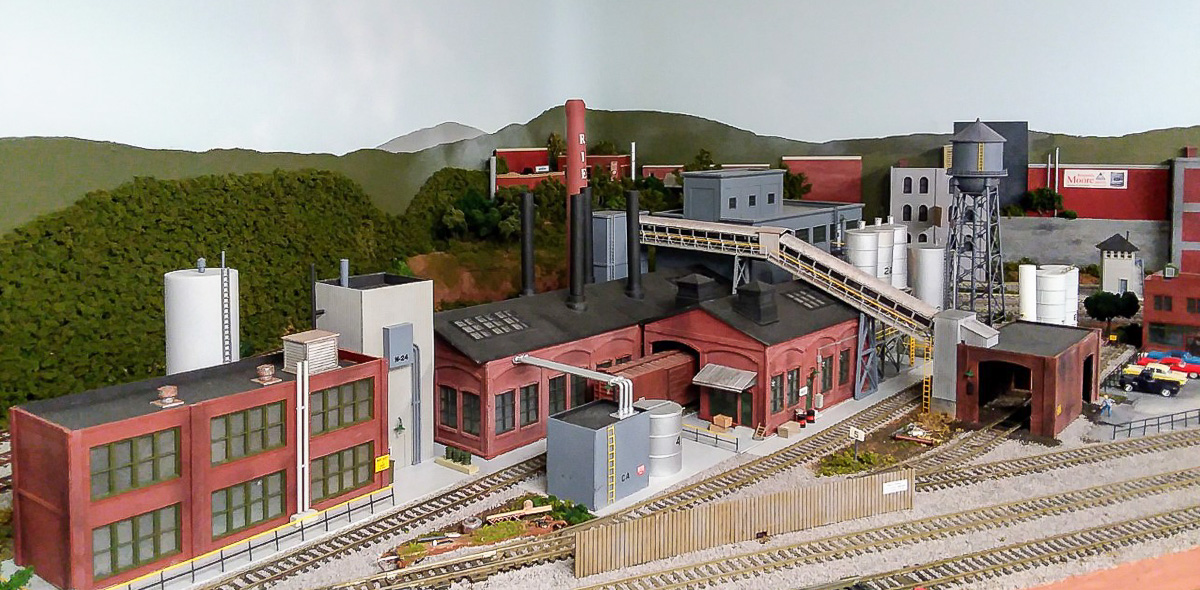

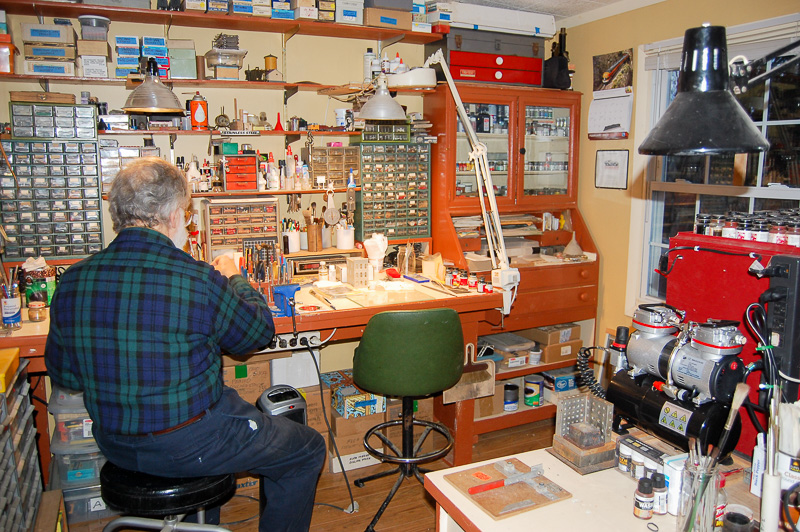
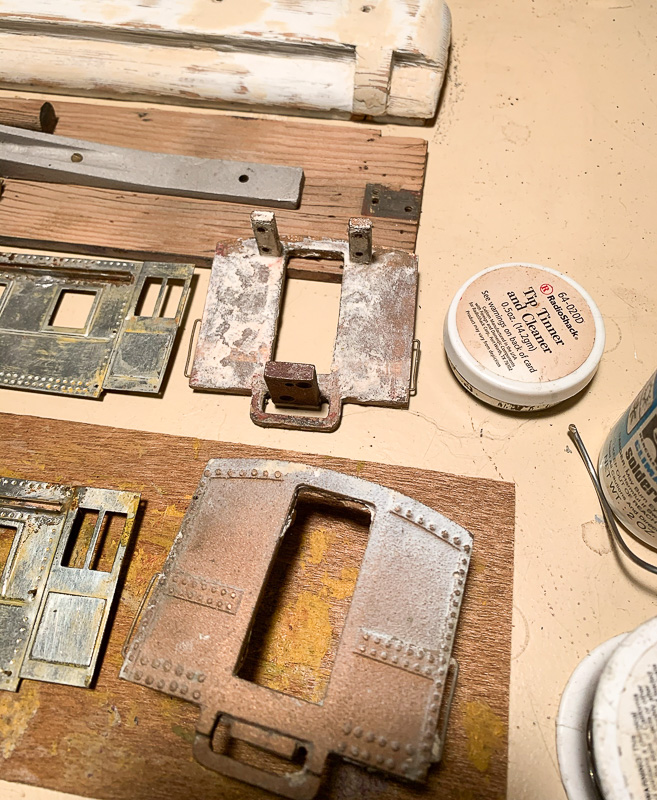 These passenger cars are O scale items for Jay Beckham’s railroad. Jay discovered 13 ancient
These passenger cars are O scale items for Jay Beckham’s railroad. Jay discovered 13 ancient 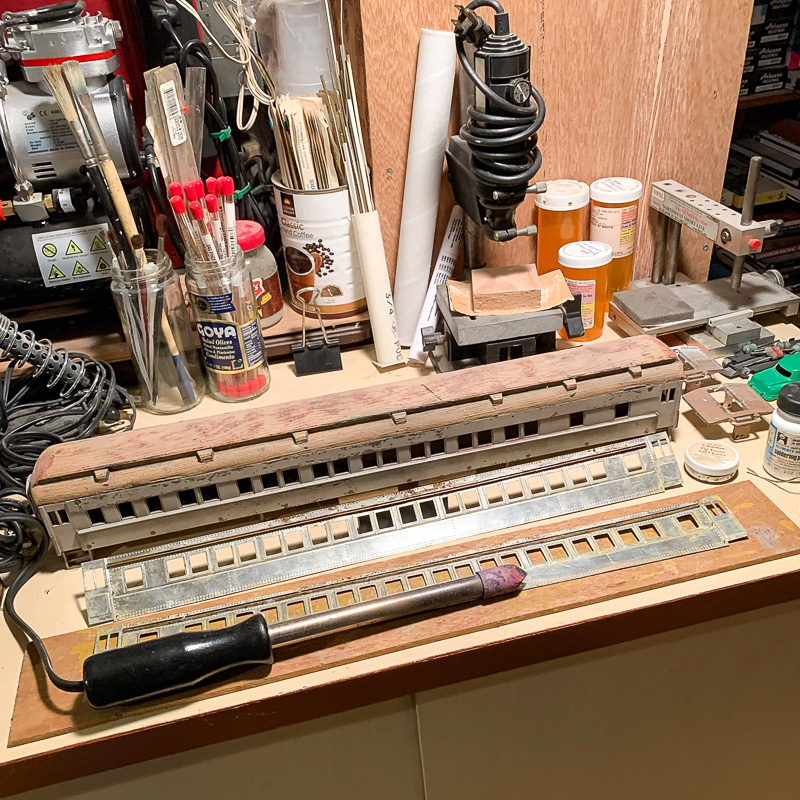
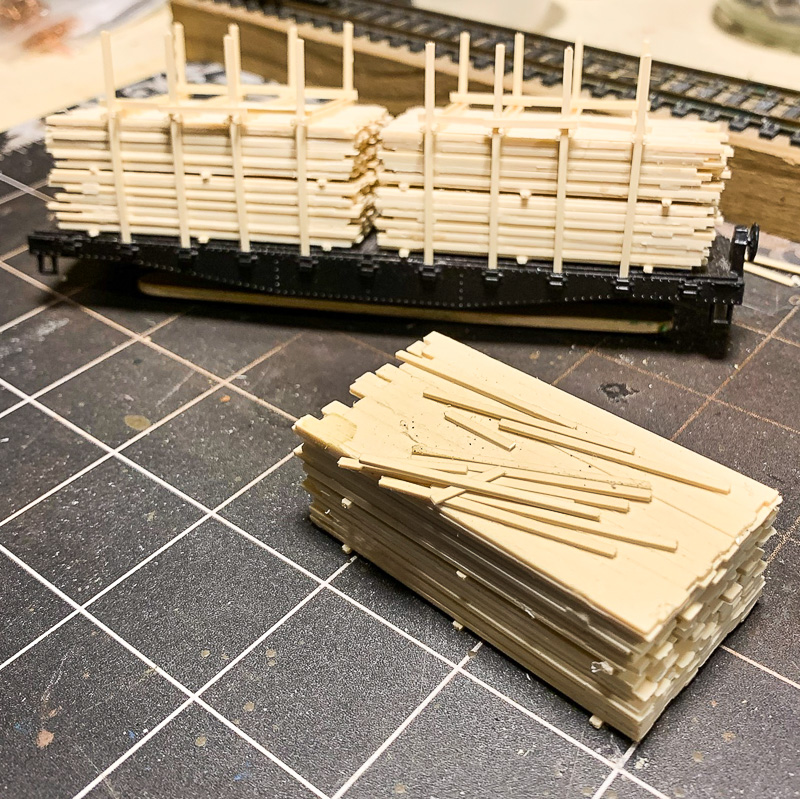 I’d always admired the open flat car lumber load as featured on
I’d always admired the open flat car lumber load as featured on 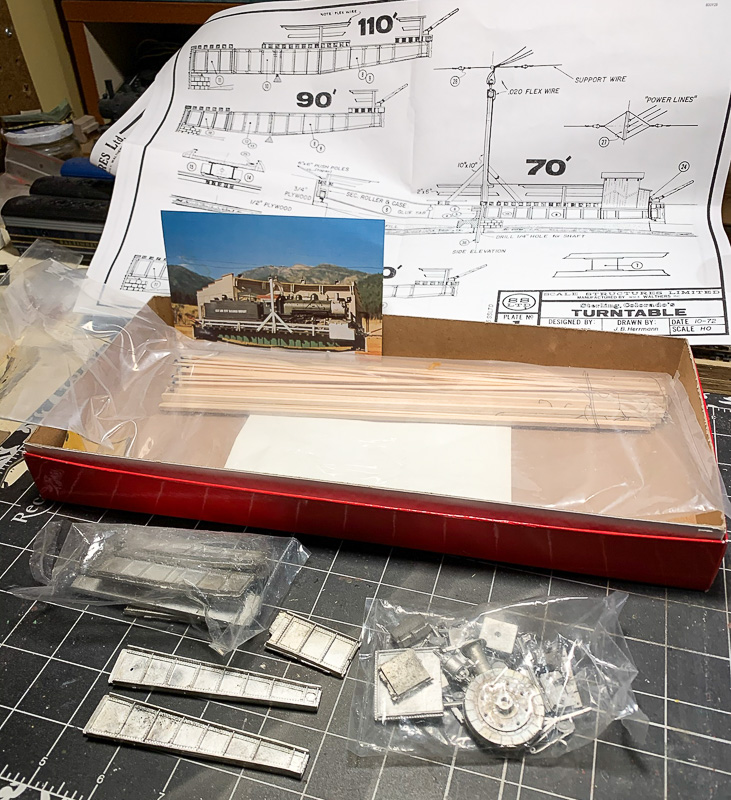 Bill Reynolds needed a turntable for turning helper engines on his last layout. I had tried to modify an Atlas turntable to do the job but the mechanism wasn’t up to the task. Bill had a kit, however, for a turntable that would be ideal for the job. Never having built a turntable before, I volunteered for the task. It appears to be an interesting kit. The pit is to be constructed of several layers of plywood. Different diameters of pit opening and thickness of wood being used to create the step for the ring rail. I haven’t begun this project yet but am looking forward to it.
Bill Reynolds needed a turntable for turning helper engines on his last layout. I had tried to modify an Atlas turntable to do the job but the mechanism wasn’t up to the task. Bill had a kit, however, for a turntable that would be ideal for the job. Never having built a turntable before, I volunteered for the task. It appears to be an interesting kit. The pit is to be constructed of several layers of plywood. Different diameters of pit opening and thickness of wood being used to create the step for the ring rail. I haven’t begun this project yet but am looking forward to it. 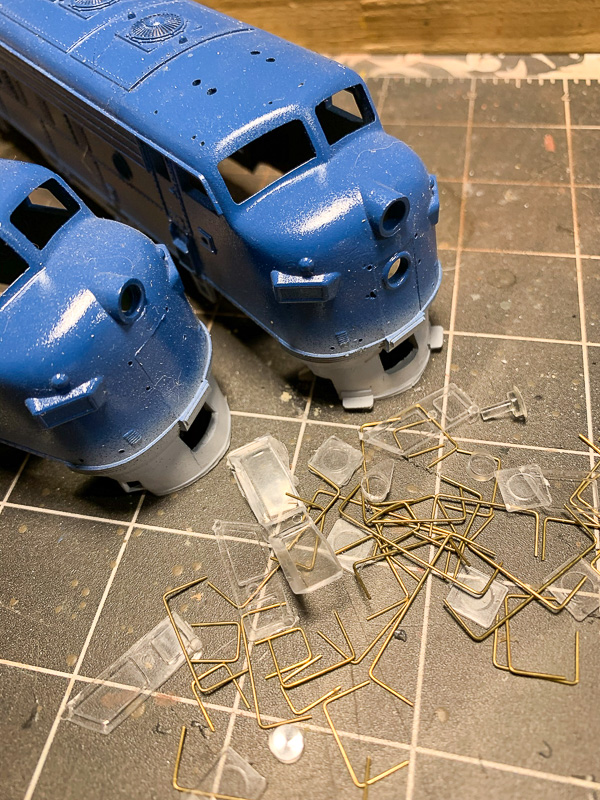 Bob Winkler has a set of locomotives he set up with a pair of old AHM FT cab unit bodies. I’m not sure what the chassis are but they run beautifully. They’ve always irritated me though as the wheelbase is wrong for the FT. To that end, I decided to fit out a pair of F7 shells to replace the FT shells. The stirrups on the pilot of one shell were broken. Rather than attempt a repair of the stirrups I thought it would be interesting to install steps on the pilot of one of the locomotives. Both will be fitted with
Bob Winkler has a set of locomotives he set up with a pair of old AHM FT cab unit bodies. I’m not sure what the chassis are but they run beautifully. They’ve always irritated me though as the wheelbase is wrong for the FT. To that end, I decided to fit out a pair of F7 shells to replace the FT shells. The stirrups on the pilot of one shell were broken. Rather than attempt a repair of the stirrups I thought it would be interesting to install steps on the pilot of one of the locomotives. Both will be fitted with 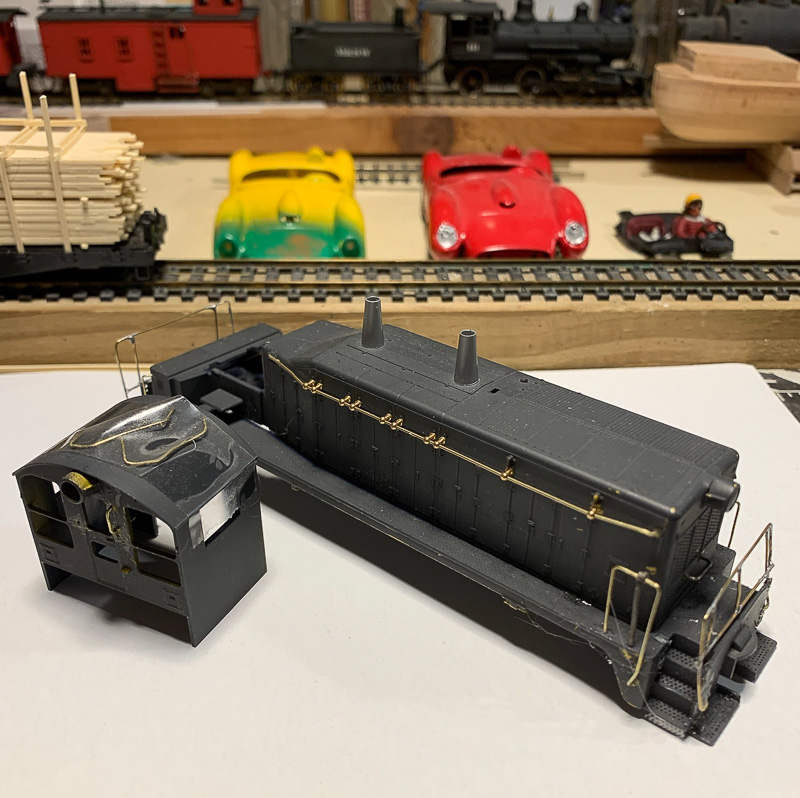 The NW-2 is another project awaiting attention in the spray booth. It will be painted and lettered for Bob Winkler’s “Central Maryland”. Bob has a thing for EMD switchers. The handrails are his handiwork and are essentially scratch built as the locomotive shell had none.
The NW-2 is another project awaiting attention in the spray booth. It will be painted and lettered for Bob Winkler’s “Central Maryland”. Bob has a thing for EMD switchers. The handrails are his handiwork and are essentially scratch built as the locomotive shell had none. Alex has expressed interest for some time in building a layout based on a “spaghetti western” theme. Think Clint Eastwood and
Alex has expressed interest for some time in building a layout based on a “spaghetti western” theme. Think Clint Eastwood and 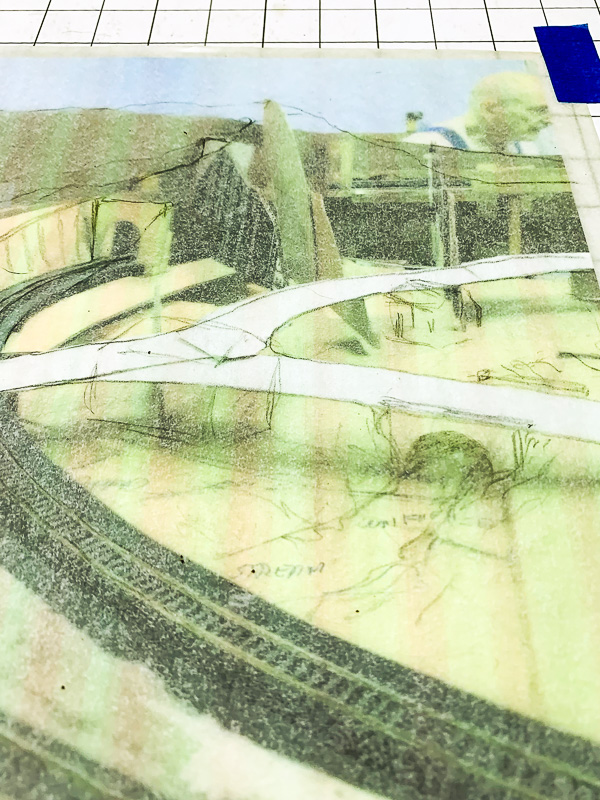
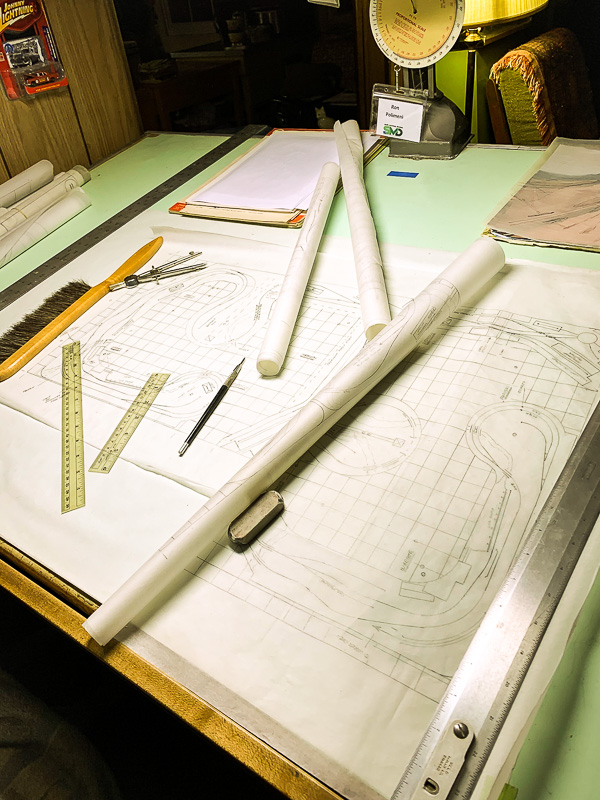 Track planning is a hobby within the hobby for me. Superintendent Jerry Skeim is in the process of constructing a large, double-deck On30 layout. Jerry and I have enjoyed working together as a crew during operating sessions. Talking trains, one thing led to another and Jerry asked if I could offer some thoughts on his project. Beware of what you ask for.
Track planning is a hobby within the hobby for me. Superintendent Jerry Skeim is in the process of constructing a large, double-deck On30 layout. Jerry and I have enjoyed working together as a crew during operating sessions. Talking trains, one thing led to another and Jerry asked if I could offer some thoughts on his project. Beware of what you ask for.